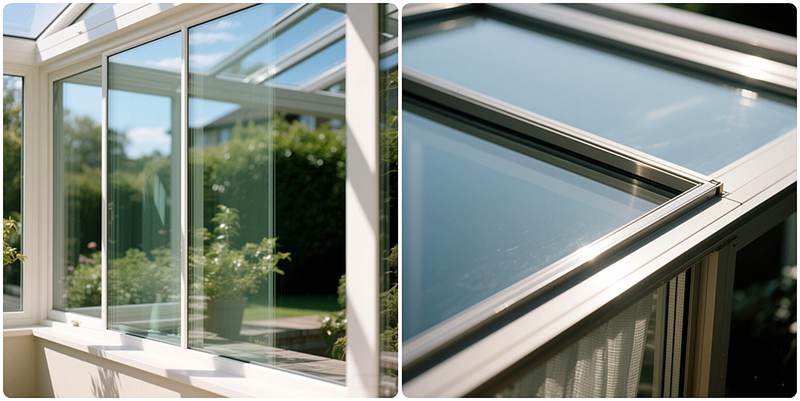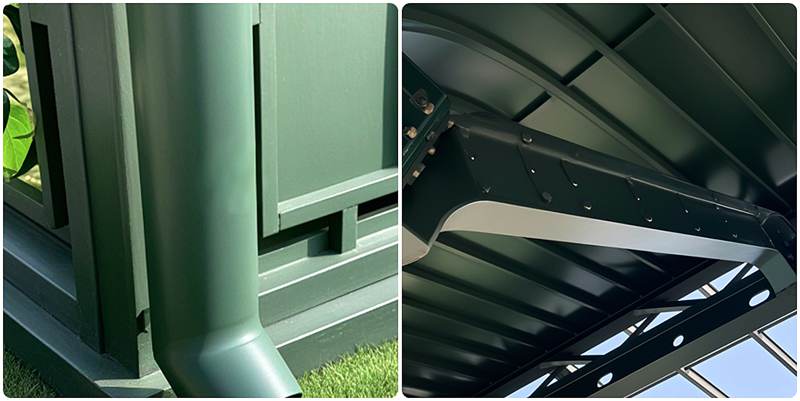
How to Insulate and Moisture-Proof a Sunroom in Summer
Struggling with a hot, sticky sunroom in summer? Whether you own a charming Victorian greenhouse, modern green houses Victoria style, or regular sunroom, we've got easy fixes! Learn how to keep your space cool and dry with simple insulation tricks and moisture control. From window films to smart ventilation, these practical tips will transform your sunroom into a comfortable summer retreat. Say goodbye to overheating and hello to year-round enjoyment of your favorite sunny spot!

Sunrooms let you soak up natural light while staying sheltered – until summer arrives. That’s when your cozy retreat can turn into a sweltering greenhouse. It doesn’t matter if you’ve got an elegant Victorian greenhouse, a sleek modern sunroom, or just a simple glass addition. To keep your space comfortable through every season, you’ll need two things: good insulation and proper moisture control.
Why Insulate and Moisture-Proof Your Sunroom?
Sunrooms trap heat, making them unbearably hot in summer. Without proper insulation:
-
Temperatures can soar 10-15°F hotter than outside
-
Humidity leads to condensation, mold, and musty smells
-
Glass panels turn into heat magnets
A well-insulated sunroom stays cooler, reduces energy costs, and prevents moisture damage.
Best Ways to Insulate a Sunroom
1. Upgrade Windows & Glass Panels
Single-pane glass is the biggest culprit for heat transfer. Consider:
-
Double or triple-glazed glass – Reduces heat penetration
-
Low-E (low-emissivity) coatings – Reflects infrared heat while allowing light
-
Tinted or reflective glass – Cuts glare and solar heat gain
Pro Tip: If replacing glass isn’t an option, apply UV-blocking window film for a budget-friendly fix.
2. Install Thermal Curtains or Blinds
Heavy, insulated curtains or cellular shades block sunlight while adding an extra insulation layer.
-
Blackout curtains – Best for extreme heat reduction
-
Bamboo or solar shades – Filters light while keeping heat out
3. Seal Gaps & Cracks
Drafts let hot air in and cool air escape. Check:
-
Window and door frames
-
Roof joints (common in Victorian greenhouse designs)
-
Baseboards and wall connections
Use weatherstripping, caulk, or expanding foam to seal leaks.
4. Add Insulation to Walls & Ceiling
If your sunroom has solid walls (not just glass), insulate them properly:
-
Spray foam – Best for tight spaces, blocks moisture
-
Fiberglass batts – Affordable but requires vapor barriers
-
Reflective foil insulation – Ideal for metal or glass roofs
For older green houses Victoria styles, consider adding insulated panels inside the frame.
5. Improve Roof Insulation
Glass or polycarbonate roofs absorb the most heat. Solutions:
-
Install a radiant barrier under the roof
-
Use insulated roof panels (if replacing is an option)
-
Add an exterior shade sail to block direct sunlight

Insulate Sunroom In Summer
How to Moisture-Proof Your Sunroom
Humidity turns sunrooms into saunas. Prevent condensation and mold with these tips:
1. Use a Dehumidifier
A portable dehumidifier keeps humidity levels below 50%, preventing:
-
Foggy windows
-
Musty odors
-
Wood rot (common in Victorian greenhouse structures)
2. Ventilate Properly
Good airflow is crucial. Try:
-
Ceiling fans – Circulate air upward
-
Roof vents or operable windows – Let hot air escape
-
Cross-ventilation – Open opposite windows for a breeze
3. Choose Moisture-Resistant Materials
If renovating, opt for:
-
PVC or aluminum frames (instead of wood, which warps)
-
Mold-resistant drywall for walls
-
Tile or waterproof laminate flooring
4. Apply Waterproof Sealants
Seal glass edges, wooden beams, and joints with:
-
Silicone caulk (for windows)
-
Waterproof paint (for walls)

Moisture-proofing, drainage and electric sunroof
Bonus: Cooling Tips for Sunrooms
-
Install an awning or exterior shades
-
Use light-colored roofing to reflect heat
-
Add indoor plants (like ferns) to absorb humidity
Final Thoughts
A well-insulated and moisture-proofed sunroom stays comfortable even in peak summer. Whether you own a historic Victorian greenhouse, a modern green houses Victoria-style structure, or a simple glass room, these upgrades make it usable year-round.
Need help with your sunroom project? Consult a local specialist for custom solutions!
Why Choose Us?
As the first manufacturer in China to introduce the Victorian conservatory design from Europe, we have 36 years of production experience since 1988, and our products are distributed in 68 countries.
We have a professional team of 8 conservatory design engineers and 60 production workers. We are equipped with 2 hot-dip galvanizing machines, 2 steel shot blasting machines, and 1 spray line.
Our professional design team can provide theoretical calculation data support for wind pressure resistance, earthquake resistance, and snow resistance of large-scale steel structure conservatories.
Strict quality control. 8 inspection stages: raw material inspection, cutting and blanking size inspection, welding quality inspection, hot-dip galvanizing quality inspection, spray quality inspection, assembly quality inspection, and packaging quality inspection. Ensuring smooth assembly of the products, no rust, no leakage, and compliance with customer national standards.
We cooperate with many well-known architectural design companies worldwide.
Customized services. We can customize according to customer designs and dimensions. We also provide supporting facilities such as electric sunshades and air conditioners.
We offer installation dispatch services, inspection services, and free replacement of parts. We also present high-value exquisite gifts.
Video factory tour. You can view the entire production process.
Ready to Bring Your Greenhouse to Life?
Share your ideas and we'll create a custom solution just for you. Your email address will not be published. Required fields are marked *




